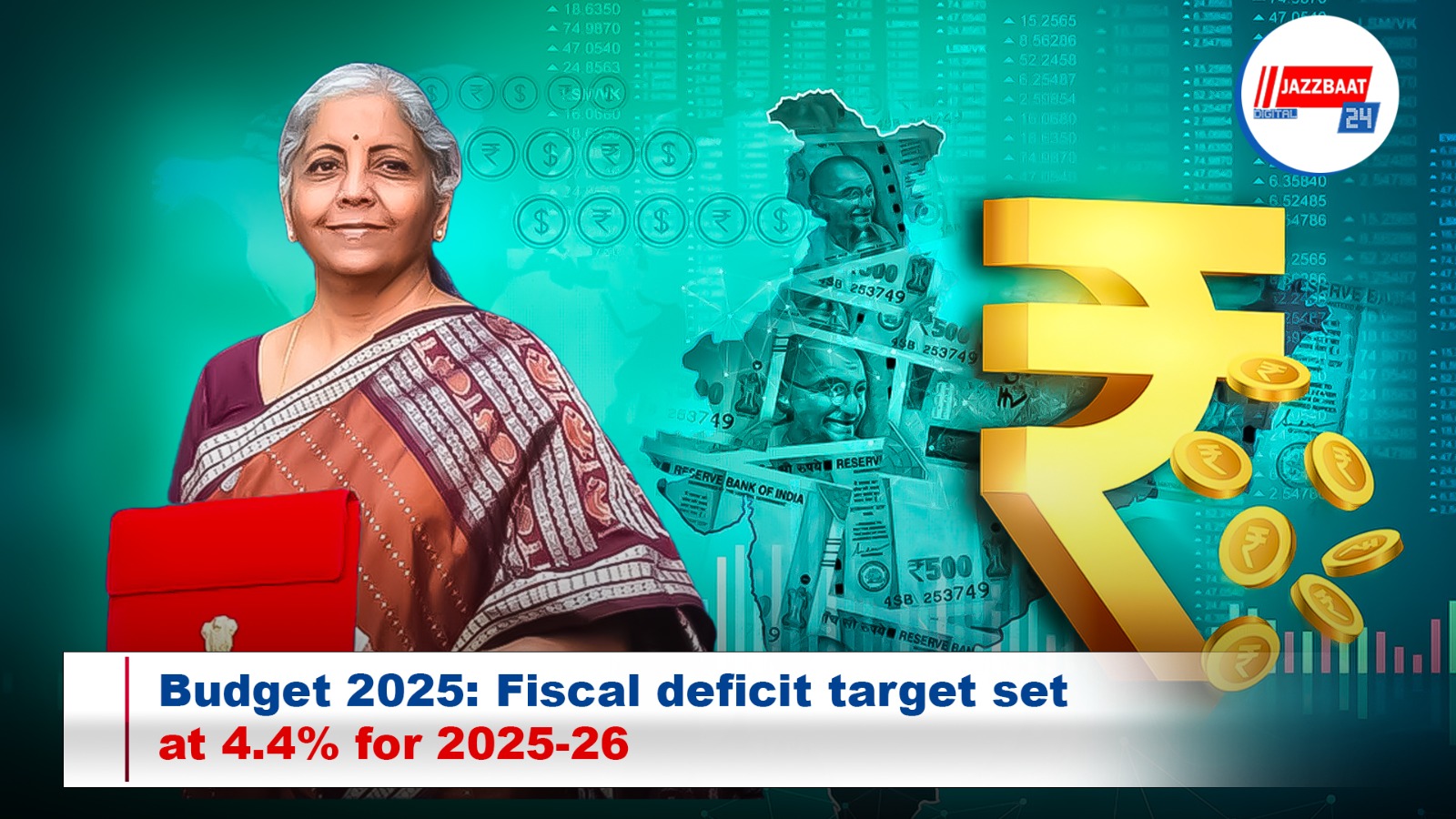Finance Minister Nirmala Sitharaman stayed on the fiscal prudence path and set the fiscal deficit target for 2025-26 at 4.4% as against its commitment to bring down the deficit to below 4.5% by 2026 when the economy may need more spending to boost consumption as it’s expected to hit a 4 year low this year.
As per the Fiscal Responsibility and Budget Management Act, the government had to bring down the fiscal deficit to below 4.5% of GDP by 2025-26. In the previous Budget Sitharaman had said the fiscal consolidation path announced in 2021 has worked well for the Indian economy and the government will reach 4.5% deficit.
The government stayed on the fiscal glide path even as the middle class demanded tax relief.
For this year ending March 31, the government has reduced the deficit target to 4.8% from 4.9% in the previous budget, likely due to lower spending on planned capital expenditure and larger than expected central bank dividend.
For 2026, total receipts (excluding borrowings) and total expenditure now estimated at Rs 34.96 lakh crore and Rs 50.65 lakh crore respectively. Net tax receipts estimated at 28.37 lakh crore.
For this year, Sitharaman said the revised estimate of total receipts (excluding borrowings) is Rs 31.47 lakh crore of which net tax receipts is Rs 25.57 lakh crore. Revised estimate of total expenditure is Rs 47.16 lakh crore of which capital expenditure is about Rs 10.1 lakh crore.
Industry body CII had asked the government to maintain the fiscal deficit targets of 4.9% of GDP for 2024-25 and 4.5% for 2025-26 saying “overly aggressive targets” could harm India’s growth.
Economists had said India’s FY25 fiscal deficit calculations will be impacted as the economy is expected to grow at 9.6% in nominal terms, lower than the 10.5% growth projected in the Budget. Goldman Sachs & Standard Chartered had forecast India to peg its FY26 fiscal deficit at 4.4-4.6%.
New Delhi will borrow a gross Rs 14.82 lakh crore from the debt market in the next fiscal year and will borrow a gross of Rs 14.01 lakh crore in this year.
India’s GDP is expected to grow at 6.4% in FY25, a 4 year low and down from 8.2% last year according to the first advance estimates.
Prime Minister Narendra Modi returned to power for the third time but with a weaker mandate and with the support of allies - Chandrababu Naidu and Nitish Kumar. The government had given big packages to Naidu and Nitish-ruled states of Andhra Pradesh and Bihar in the previous Budget and some were expected in this Budget as well, though that could stretch India’s fiscal deficit.
The government was also expected to give more tax sops to the salaried class which would boost consumption but may pinch the exchequer. Encouraged by the poll victories in Maharashtra and Haryana, the Narendra Modi government was likely to send a reformist budget message on ease of doing business and improving living standards.
India will try to narrow the budget gap riding on tax revenue hopes despite the government’s continued capex push to boost consumption and create jobs and to become the world’s third largest economy by 2030.
But India’s capital expenditure fell 12.3% y-o-y during April-November due to general elections in the first quarter and heavy rains later.
RBI had transferred Rs 2.11 lakh crore to the government which is more than double of what was budgeted from the central bank and state-run lenders.
India’s fiscal deficit was 5.6% of GDP in FY24, below the revised estimate of 5.8%.
India’s fiscal deficit for the first nine months of this fiscal year till December was Rs 9.14 lakh crore or 56.7% of annual estimates. Net direct tax collections for this fiscal year till January 12 have grown 15.9% y-o-y to Rs 16.90 lakh crore.
To become a global player, the government wants to continue fiscal discipline which is essential for better credit ratings and to recover from the 9.2% fiscal deficit in FY21 during the Covid period when millions were unemployed, businesses were shut and government’s expenditure went up and tax collections dried up to a trickle.
Monetary and fiscal policy during Covid period allowed India to breach the globally accepted fiscal deficit levels. It also suspended the fiscal deficit limits under FRBM Act. The government plans to narrow the budget gap only gradually to 4.5% by 2025-26 against much lower limits under the Act.
But since the pandemic crisis, India has narrowed the fiscal deficit which is the difference between total revenue and total expenditure of the government. It met the 6.4% budget gap target for FY23, down from 6.7% in FY22.
Strong growth in tax collections due to improving economic activity helped the government to narrow the fiscal deficit and the trend seems to continue in the next fiscal as well as the numbers for FY25 indicate Sitharaman is staying on the fiscal glide path.
